The desert willow, Chilopsis linearis, is a flowering tree usually grown for its abundant and profuse blossoms. Its trunk develops multiple branches forming thick foliage and rendering it an excellent bonsai specimen. Read on and learn the methods, procedures, and care requirements that we've researched and let's create a bonsai out of your tree!
First, decide on the height of the tree you want to develop based on the trunk's thickness. Once you've completed the cut, defoliate the remaining branches to reveal the general structure of your desert willow. Select the limbs you want to train, then remove the excess growth.
Not many people attempt to make a bonsai out of desert willows primarily due to its thick and seemingly complex trunk and branch systems. However, there are steps and methods which can actually simplify the whole process. We hope the post helps you accomplish just that.
Desert Willow: An Overview
Desert willow, also known as Chilopsis linearis, is a flowering tree popular for the vibrant and fragrant clustered pink blossoms it produces during the summer season. Albeit the name, it is not technically a willow tree. It is a misnomer based on their physical attributes.
The tree has its ecological importance since it provides a bird nesting area, food for specific kinds of wildlife, and a covering for animals.
It can be grown as a hedge or a shade tree because it actually forms a multi-trunk structure with thick branches, and it reaches a mature height of 15 to 25 feet and has a spread of 10 feet.
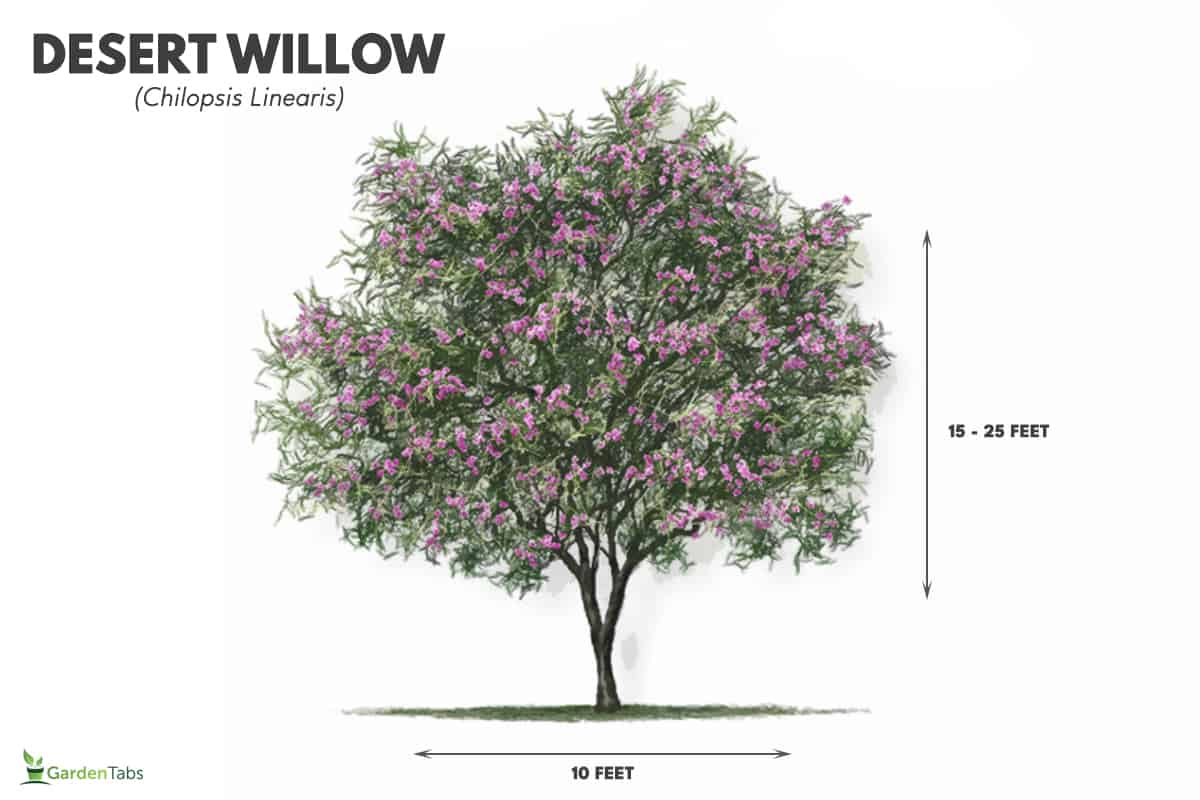
Not many people attempt to use the tree as a bonsai specimen because it is mostly challenging to train and form; however, some particular ways or methods can help and guide you.
How to Bonsai Desert Willow
Traditionally, naturally stunted and dwarfed trees were harvested and developed further to produce the perfect bonsai. Over time, the specimens were depleted and became difficult to find and procure.
However, now many potential materials and varieties are available in most nurseries and plant shops to assist with your bonsai. Below, we'll discuss key steps toward a healthy bonsai using the desert willow.
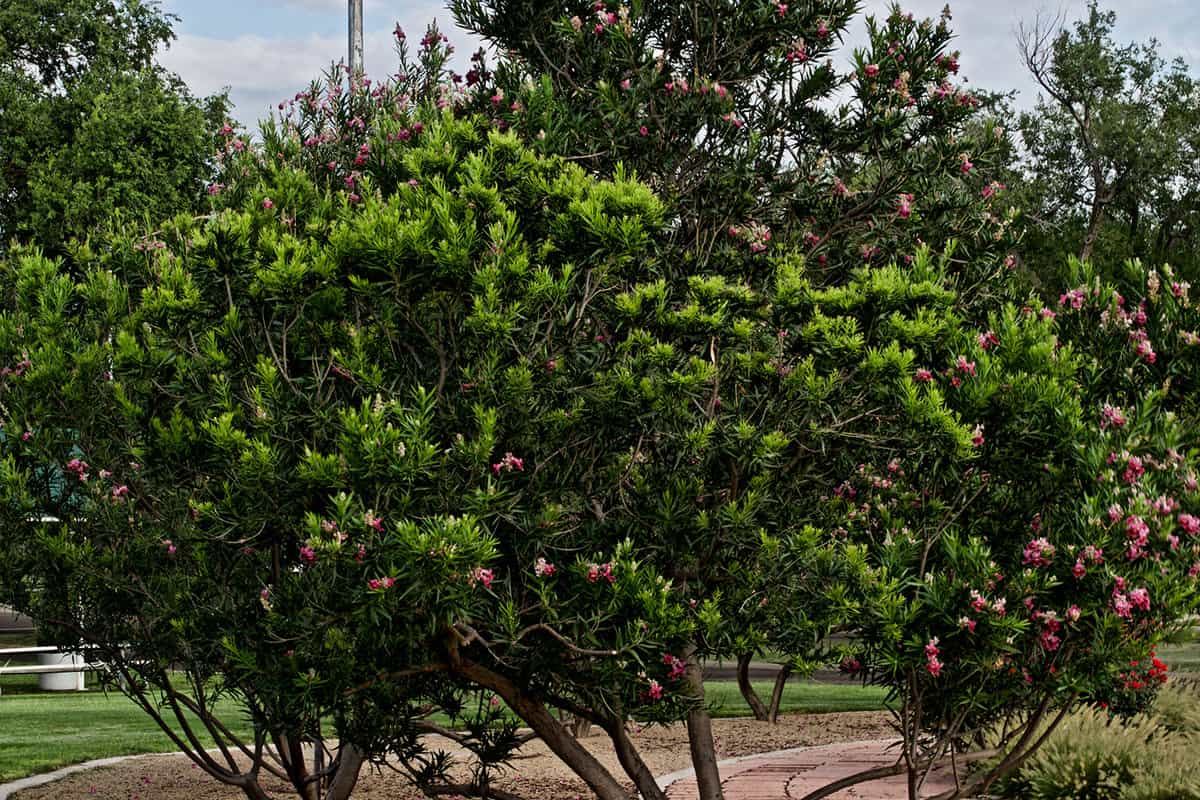
Picking Your Desert Willow Tree
Picking the right desert willow tree is probably the most important step since it will ultimately determine the appearance, structure, and beauty of the finished bonsai.
Select a relatively young specimen that features a wide tapered trunk with multiple branches and thick foliage. This tree structure will give you more possibilities on how to eventually train and form your desert willow.
Initially, your material may seem chaotic and formless, with branches and leaves that grow randomly in various directions all over the main trunk. This is actually a good thing since you potentially have more choices on which growths to develop.
Preparing The Desert Willow for Bonsai
The first step is to cut off all elongated branches and wild growths that do not conform to the general form of your tree. Partly defoliate the canopy to reveal the trunk and the remaining branches.
Take your time to study the tree from all angles, then determine the appropriate height in relation to the trunk's girth or thickness. The proportion and balance between the two ultimately define the character of your desert willow. Remember that it should resemble a natural tree, only in miniaturized form.
Cut or saw off the trunk diagonally, based on the ideal height to create a tapered end that will become the tree's new apex.
Observe the tree from all sides and carefully pick the limbs you want to maintain and train. Prune off all growths and branches that are close to the base since the lower third of the tree has to be clear.
Trim the remaining branches in such a way that the tree resembles a triangular form. The lowest branches should be the longest, and the rest gradually become shorter as you ascend the trunk to its apex or terminal point.
Potting Your Newly Shaped Bonsai Desert Willow Tree
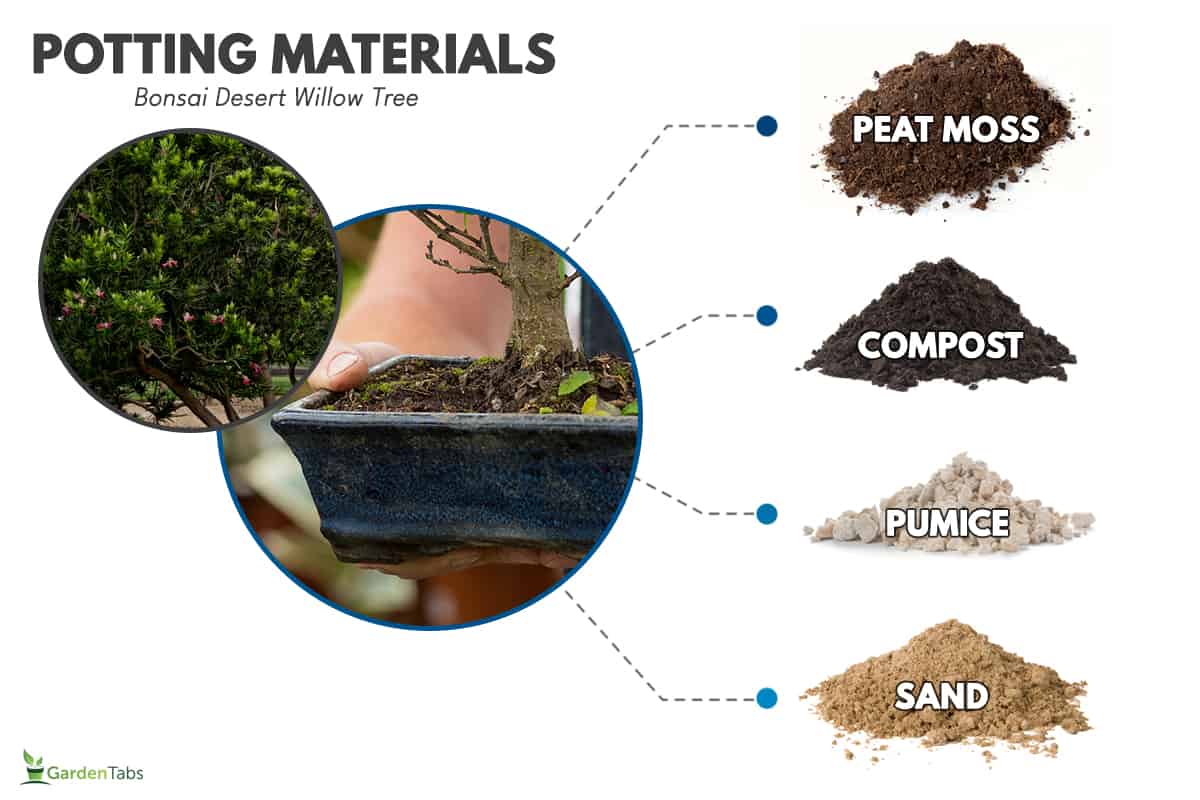
The soil mix should contain proportions of organic matter and inorganic materials. Peat moss, loam, and compost would provide the necessary nutrients, while pumice, sand, and finely crushed gravel improve aeration and drainage.
Bonsai pots are traditionally shallow, so it would be necessary to trim part of the rootball and then anchor the tree with wires looped through the drain holes.
Once your desert willow is secured, fill in the potting mix thoroughly and evenly but not too compact. Finally, water the tree liberally, so the soil settles around the base and fills every space between the roots.
It is recommended to delay wiring the branches for a month or two while the tree is being established in its new medium. Allow time for the growth of new foliage and the development of the root system to avoid putting too much stress on the tree. During this period, it is best to place the willow in partial shade and water lightly on a regular basis.
Wiring Desert Willow Bonsai
Bonsai wiring is a relatively complex and delicate process that requires care and skill since it determines the branch structure and appearance. Use aluminum or copper wire since they do not conduct heat into the limbs or trunk. The general rule is to apply wires that are a third of the thickness of the branch it is used on.
Before proceeding, study the overall structure of the tree and try to envision the form you want. Begin with the lowest branch by anchoring the wire to the trunk and wind it evenly around at a 45-degree angle from the base to the tip.
Make sure the wire is not wound too loosely since this would not create enough tension to manipulate the branch. But more importantly, avoid applying it too tightly so as not to dig into the branch. You can now bend the portion in the direction you want; a single branch may be bent several times to create movement.
Repeat the process with the remaining branches until you are satisfied with the general effect. Wires should not be attached for more than six months since they may dig into the growing branches and produce scarring. Splice off the wires and make a new application.
How To Care For Desert Willow
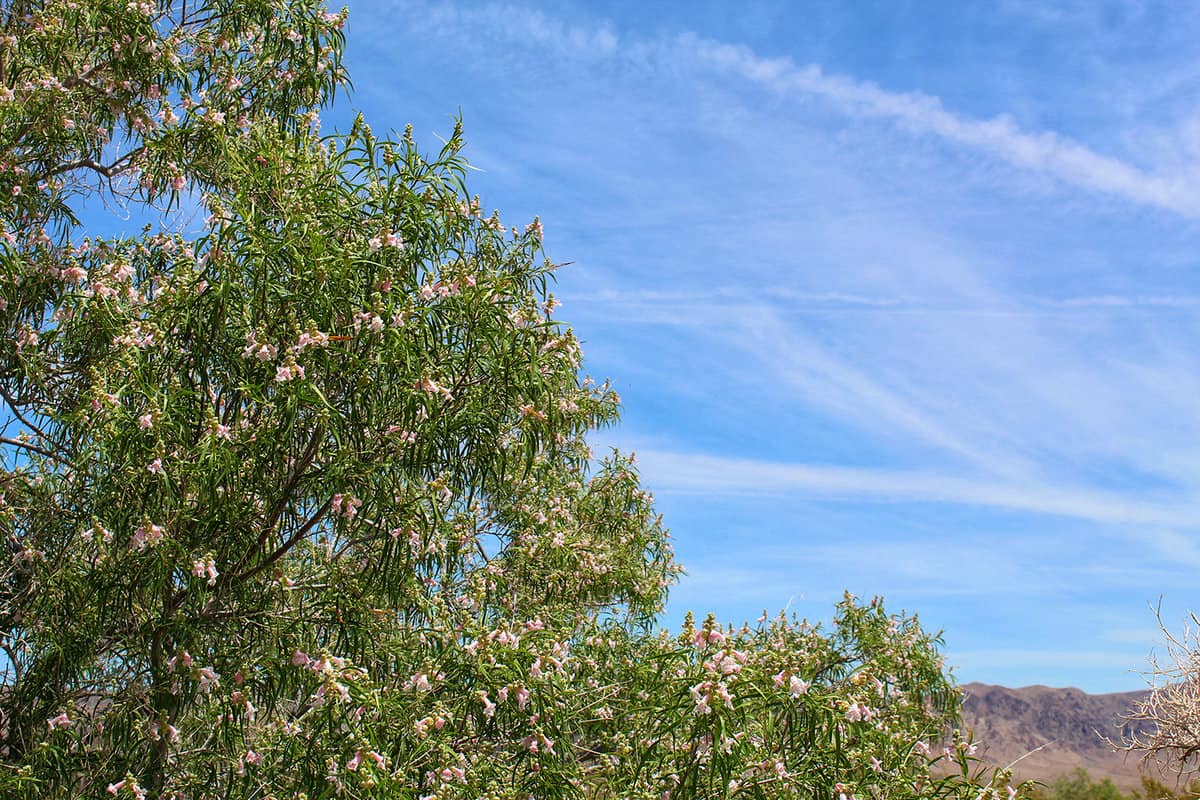
Desert willow, as a bonsai specimen, is relatively easy to care for and maintain. You just have to provide it with the specific growing conditions it requires.
Sunlight
Naturally, a desert willow prefers sunny environments. In order for your tree to thrive and produce flowers, it should receive at least 6 hours of direct sunlight per day. Avoid placing them in shady locations.
Soil
A desert willow can grow in almost all soil conditions; however, planting them in well-draining, alkaline, and loamy environments is suggested to ensure healthier growth.
Consider the soil before training or forming your tree. Use a bonsai potting mix if possible because it is specifically made to accommodate your plant’s soil and nutrient needs.
Water
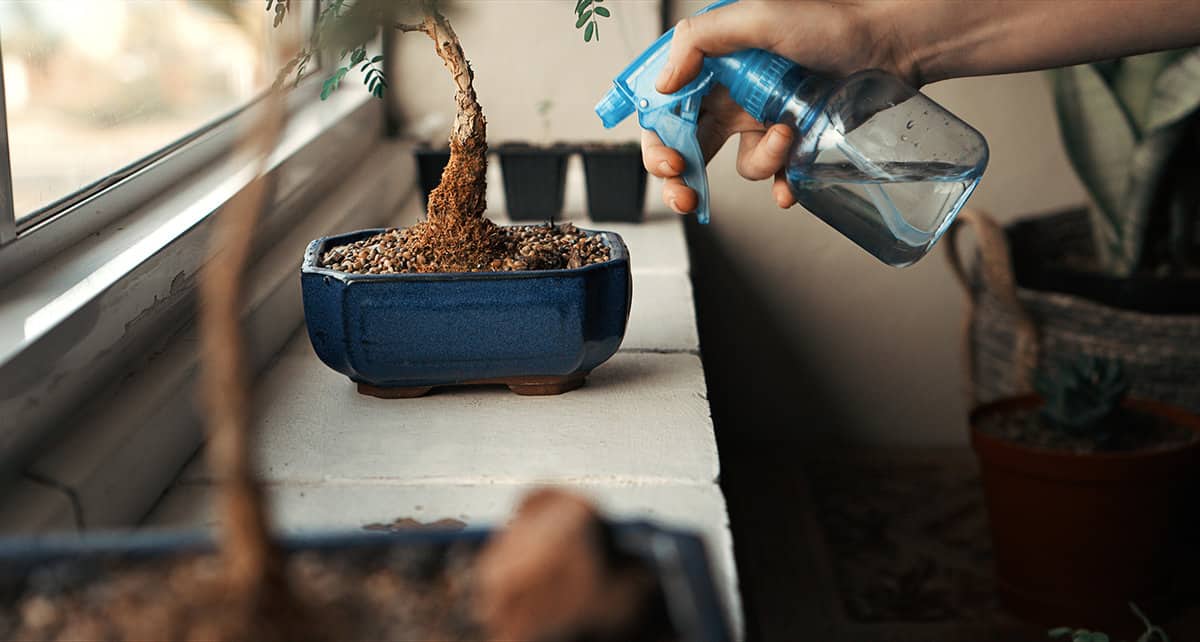
The tree is not very particular about its watering needs because it can tolerate dry conditions, especially when it becomes fully established.
While this is the case, consider the general climate and the formation of the tree. If it is the summer season and the tree is rootbound, then you will have to water your bonsai on occasion. Since it has already outgrown its pot, it can no longer receive adequate moisture.
During the winter, watering your tree once a month is ideal.
Fertilizer
Desert willow is particularly sensitive to supplemental feeding – you should not fertilize it. The trunk or the wood will become brittle and be more prone to breaking. Applying fertilizer will also increase its overall growth, which is not what you want for your bonsai.
Temperature And Humidity
Since the tree is very particular about the general climate, it is important to plant them in hot and dry locations. They will most likely thrive and grow in Hardiness Zones 7 to 9. However, if the region where you live has cooler weather, then you can opt to grow hardy cultivars.
Is Desert Willow Fast Growing?
Desert willow is a fast-developing tree that grows 2 to 3 feet a year. If you intend to make them a bonsai specimen, root and foliage pruning is necessary in order to retain a miniature height.
In Closing
The nature of the desert willow makes it an excellent bonsai material. It is a continuing process, but the regular pruning, wiring, and general training of the tree is all part of the great bonsai experience. Just follow the care tips and we hope in time, you will have your perfect specimen!
You might also be interested in these topics:
